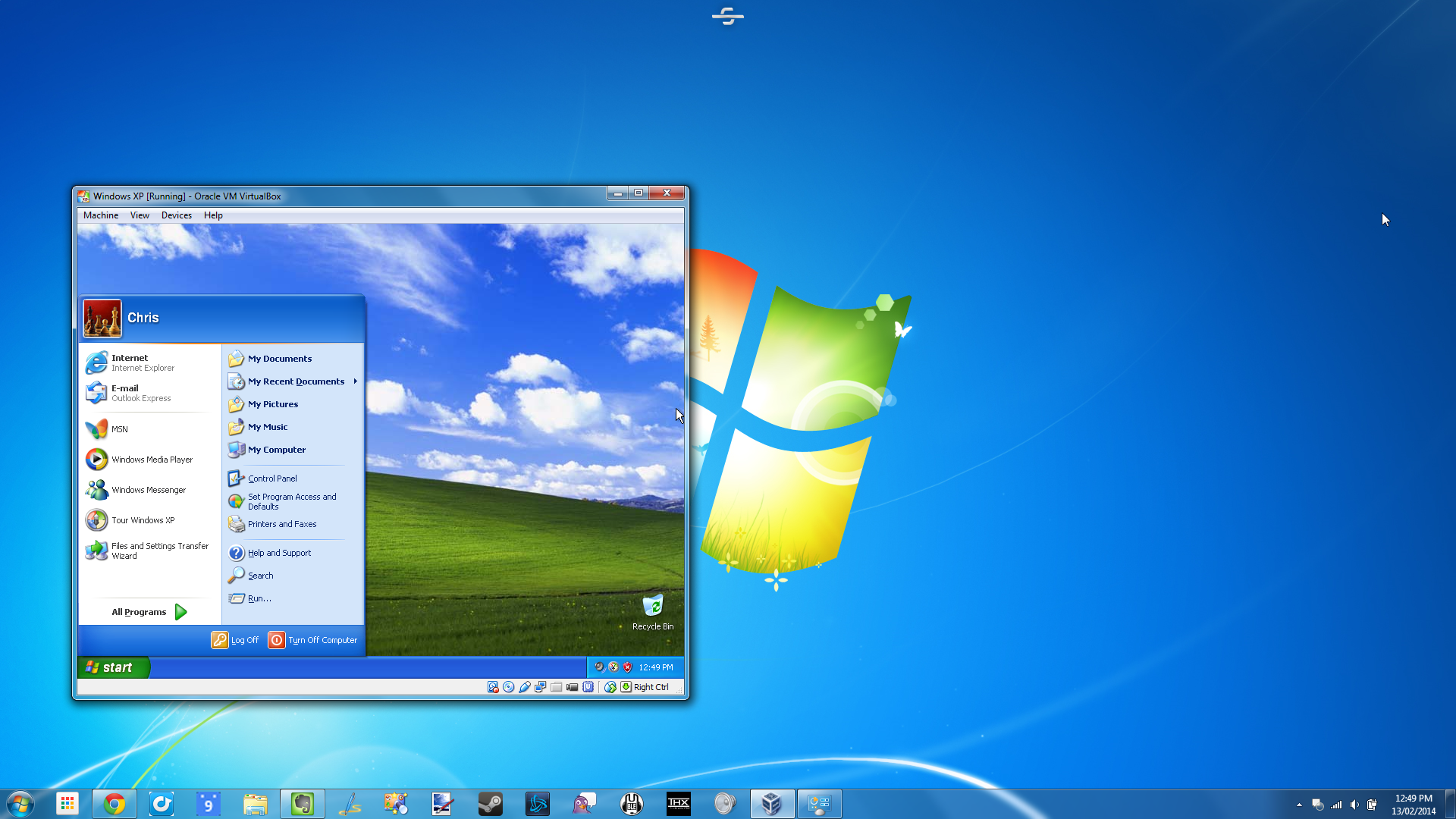
By running XP in a VM only when you must for special applications, you can start breaking yourself of the dangerous XP habit. By keeping XP on a VM, instead of running constantly on a PC, you'll be more conscious of running it rather than falling into the dangerous habit of running XP like there will still be patches coming. Just be wary of any XP programs that require network access, since that's the way the hackers will be trying to get to your virtual XP system just as if were running normally on a PC. What all this means is that with VirtualBox you run all your XP applications on your Linux system with little fuss or muss. Once you get comfortable with running two operating systems at once, this can be very handy.

You can also set VirtualBox up so that both your Mint Linux system and your XP guest operating systems can share files using the same directories or even copy and paste to applications from one operating system to the other.

It just happens to be running on top of Linux instead of the native hardware. For all practical purposes you're running real XP. What I can tell you is that when you run XP on VirtualBox you get the complete XP experience.
How to use virtualbox windows xp how to#
But for the process of just adding a new virtual drive, the above will allow you to expand your virtual machine all you want.I go into detailed instructions on how to set up VirtualBox in the gallery so I won't bother with that here. For that process you would have to use Clonezilla (or another disk cloning tool). Although this process will add a new drive, it will not expand the size of the primary drive on the virtual machine. You now have a new drive available to your virtual machine. Once you have done that the drive will be available to the system. In order for this drive to be available to Windows you have to reboot the virtual machine. On the next window, you select if you want to format the drive and, if so, what format you want the drive to be.Īfter you have this configured click Next and the formatting will complete. In this phase you will assign the drive a letter and then click Next. When your drive has been selected, click the Next button to move on to the next phase of the partitioning. Image created by Jack Wallen for TechRepublic. This gallery is also available as a TechRepublic blog post and download. This new drive will be uninitialized and will have to be initialized later (from within the running Windows virtual machine – more on that in a bit). Here you are going to add a new drive to this virtual machine. The next phase of this step is that you need to open up the settings of your virtual machine (the one you are adding the drive to) and then go to the Storage Section. This process will leave behind the newly created drive that you can then use for your original virtual machine. Once the new virtual machine is created you can then go back and delete the new virtual machine. If you need more space, adjust it during the creation of the virtual machine. By default you will create a 10GB drive – if that will serve as enough additional space for your second virtual drive, leave it as is.

Make sure you make the new drive the size you want it for the additional drive. During this process you will define a new drive for that machine. The first is to actually walk through the process of creating a new Virtual Machine. Make sure you don’t suspend the machine, because you won’t be able to access the settings.Ī couple of steps are required to make this work. The end results, however, will give you plenty of room to expand the capabilities of a virtual machine. In VirtualBox this is quite possible, albeit a bit circuitous. Virtual machines are set up to expand to a set size and once you reach that size you are out of luck – unless you know how to add virtual drives to that machine. And anyone digging deep into the world of virtualization knows that managing those virtual machines can sometimes be a daunting task. The benefits to using this technology are many and mighty: cost effectiveness, reliability, recoverability, the list of pros goes on and on.


 0 kommentar(er)
0 kommentar(er)
